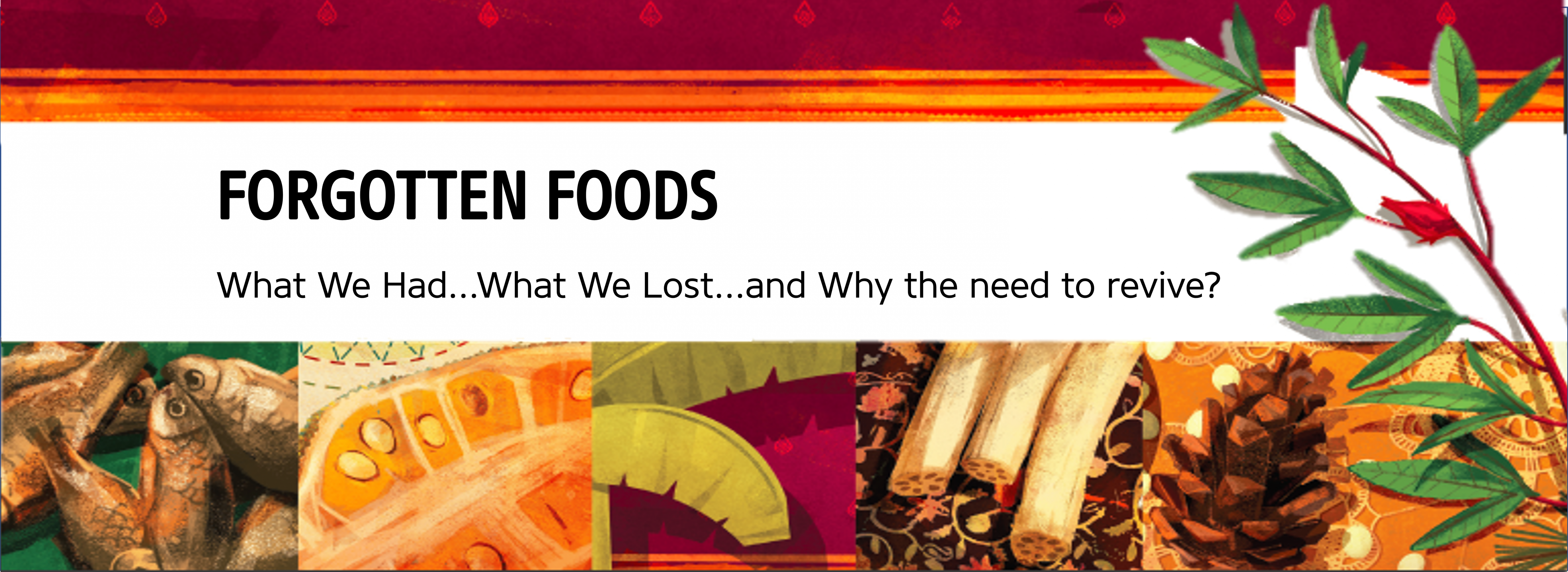A single bite or whiff has the remarkable ability to transport us into the recesses of our subconscious, where memories of savouring a diverse array of Indian cuisines, meticulously prepared by our grandmother, come flooding back. Hours spent marinating, roasting, toasting, and steaming, each dish a labour of love, enriched by unique techniques and knowledge passed down through generations—now, regrettably, seem lost.
From time-honoured grains to zesty sardines, an array of leafy vegetables to irresistible desserts, Indian thalis were not just visually stunning but also epitomized nutritional balance. Alas, we find ourselves drifting away from our indigenous foods and crops, integral components of our culinary heritage. This disconnect, unfortunate and pervasive, results in the neglect of ancient foods, recipes, and home remedies that have fostered good health and well-being for centuries.
As the pace of life accelerates and fast food dominates our diets, it is now more crucial than ever to re-establish a connection with our roots. We must reclaim what has been lost and forgotten, reintroducing these elements to our tables.
In this edition of A Culinary Kaleidoscope, we embark on a journey to reminisce about “What We Had and What We Lost.” The featured calendar showcases thalis or balanced diet platters from twelve different states, each highlighting a dish that has been disappearing from our plates and ecosystem. These fading cuisines encompass a rich tapestry of plant and herb species that urgently need to be protected and brought back into our cuisine.
Delightfully delicious and nutritionally rich, many of these traditional cuisines continue to be prepared and enjoyed in the remote corners of the country. WHH-Welthungerhilfe is actively engaged in the revitalization of our local food systems and traditional knowledge associated with forgotten, uncultivated, neglected and underutilized crops, providing a healthier choice to people and deeper connection to our cultural heritage.
Download Our Artwork Calendar 2024


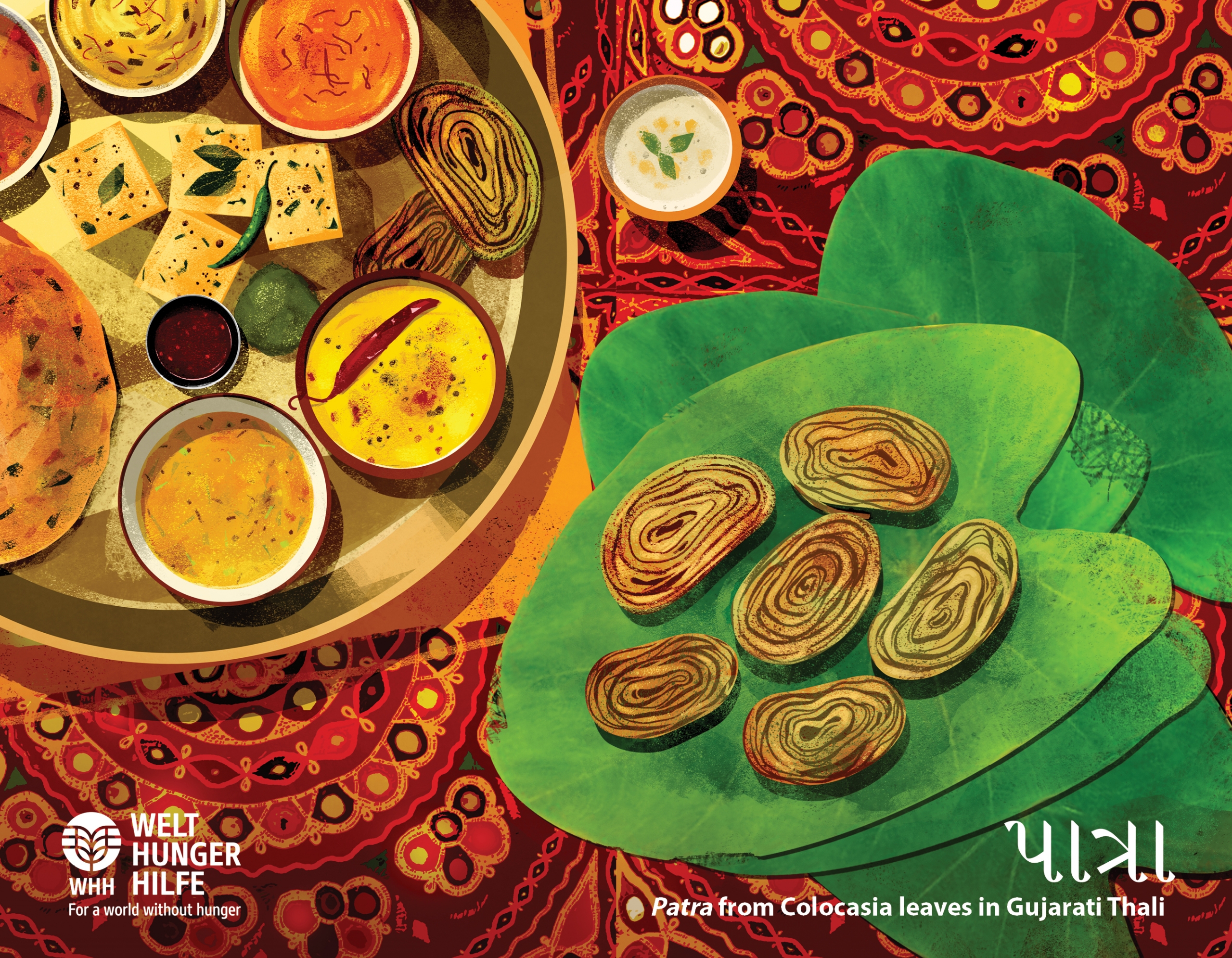
One of the favourites in every Gujarati thali, Patrasare Colocasia or Arbi leaves spread, stacked, rolled tightly with sweet and sour tamarind paste, steamed, sliced and finally pan fried with aromatic spices. Colocasia is rich in iron minerals that are essential in forming red blood cells and effective in preventing anaemia. Additionally, the presence of vitamin C enhances the body’s absorption of iron.
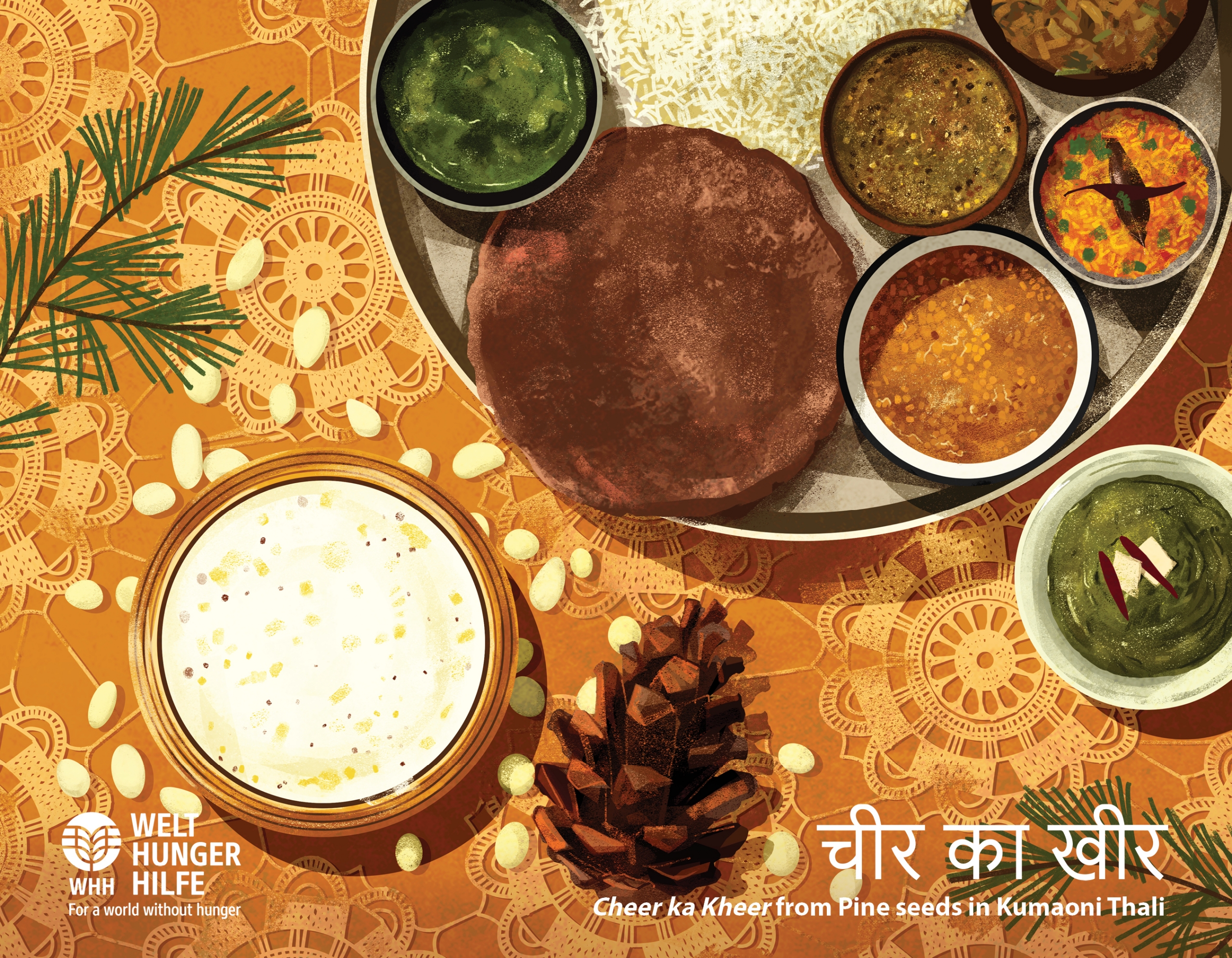
Kumaoni cuisine is both simple and highly nutritious. Cheer ka Kheer stands out as a sweet dish made from slow-cooked pine seeds, milk, and sugar, garnished with crushed pine seeds and dry fruits. Pine seeds play a vital role in promoting heart health by supporting healthy cholesterol levels and aiding in the reduction of bad cholesterol. The presence of vitamin E in pine seeds contributes to the production of red blood cells, essential for efficient oxygen transport—a valuable attribute in the challenging Himalayan environment.
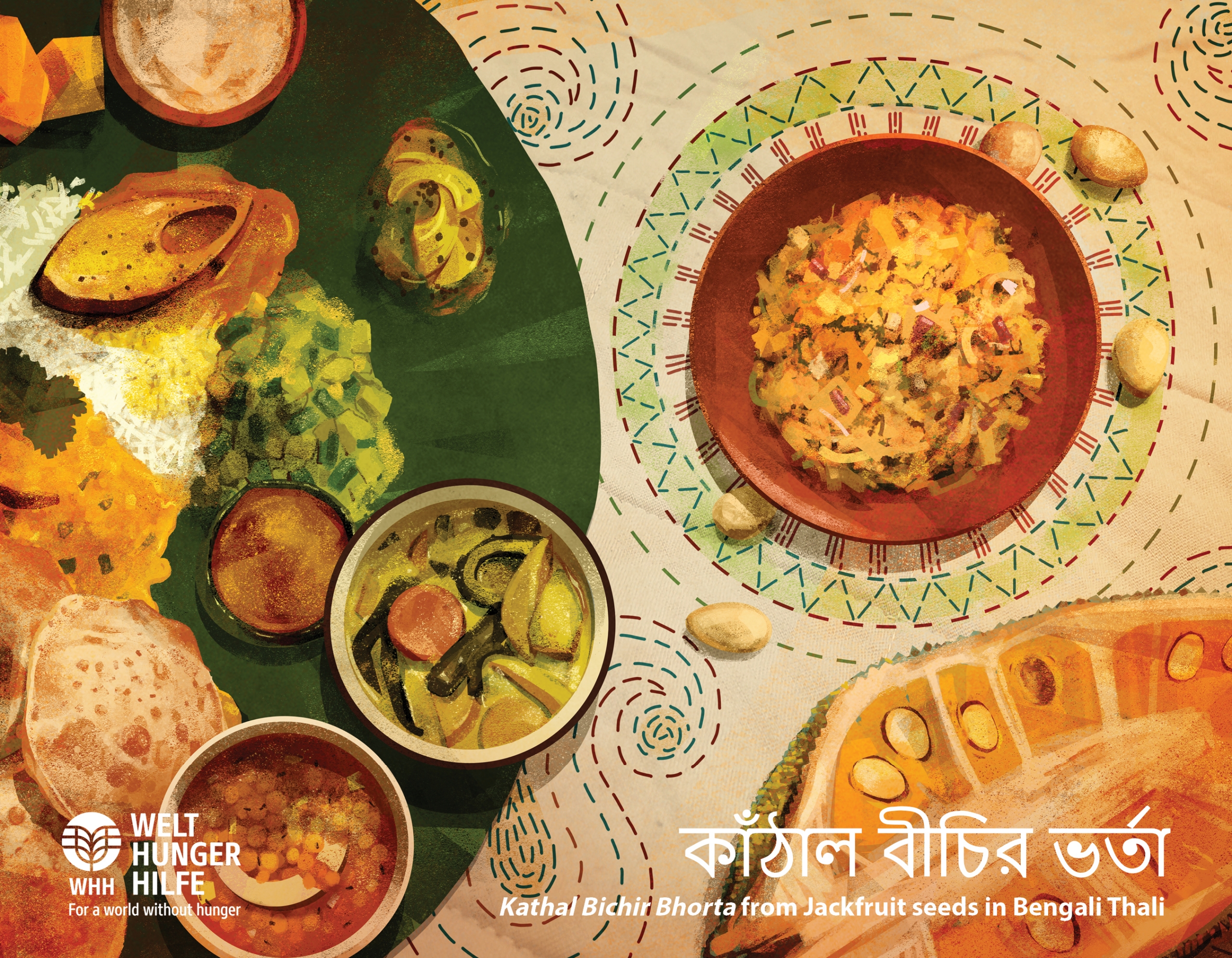
Kathal Bichir Bhorta or smashed Jackfruit seeds was once major attraction in rural Bengali thalis. The seeds from ripened jackfruit are boiled, cut into halves with the outer skin removed and mashed with a dash of mustard oil and chopped onion. Jackfruit seeds are rich in dietary fibre and B-complex vitamins as it lowers the risk of heart disease and promote weight loss. Jackfruit seeds also contain resistant starch, which controls blood sugar and keeps the gut healthy.
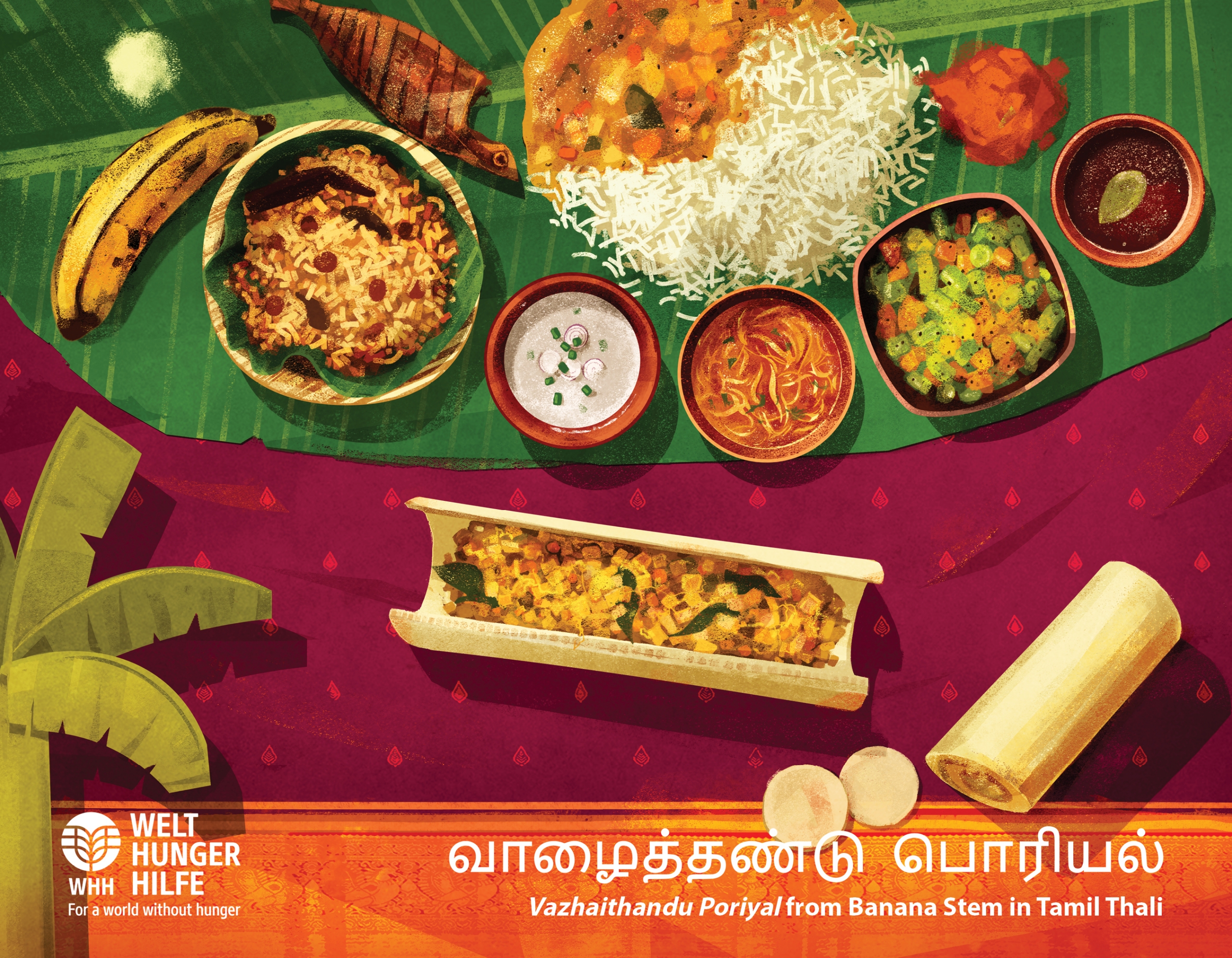
Vazhaithandu Poriyal or Banana Stem Stir Fry is a dish made from tender and fresh banana stem. The outer sheath of banana stem is removed, washed, and chopped into round pieces and then dipped in thin buttermilk. Following this, the finely chopped banana stem is mixed with pulses, stir fried and seasoned with salt and some spices. Including banana stem in our diet at least once in a week is very beneficial as it is a rich source of fibre, Potassium and Vitamin B6. It is also good for treating and preventing kidney stones.
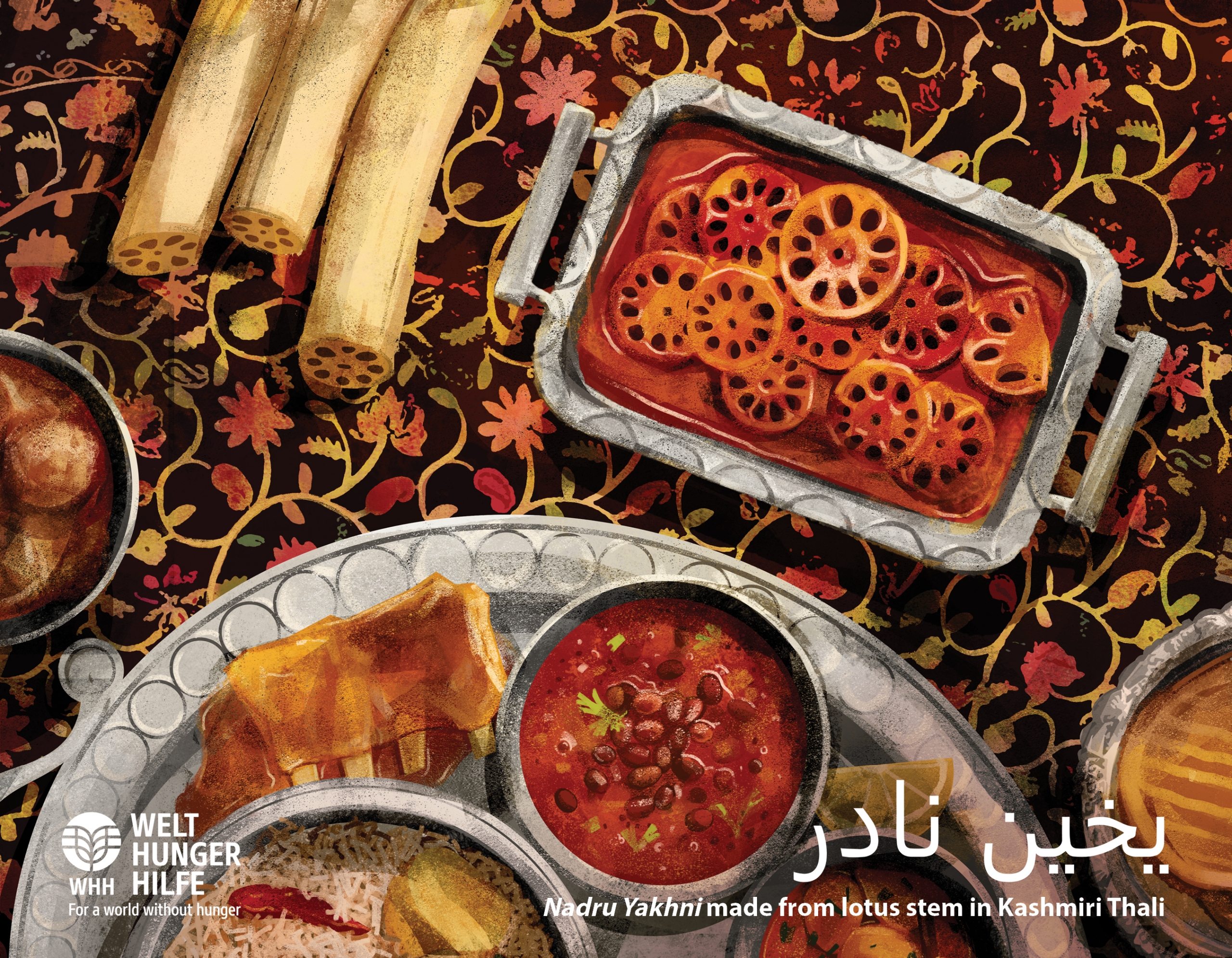
Nadru Yakhni or lotus stem curry is one of the most loved delicacies from the cuisine of Kashmir. Porous lotus stems are boiled until they are tender, then stewed in a spiced yogurt gravy fragrant with dried mint. Beyond being a culinary gem, lotus stem or Nadru has several medicinal properties like phytonutrients that help in building up a robust immune system and reduce the risk of heart diseases and strokes.
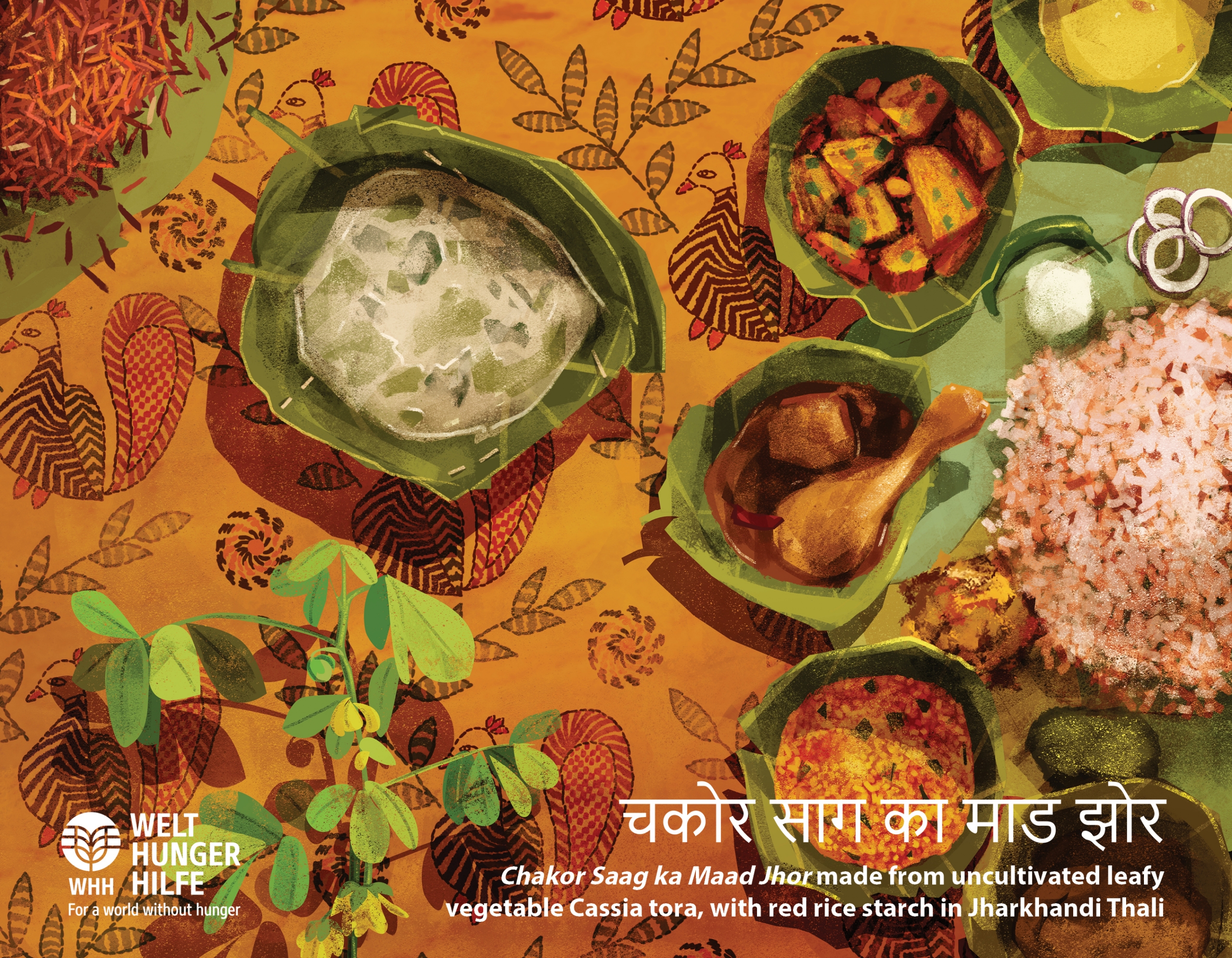
Chakor Saag ka Maad Jhor or soup made with red rice starch and leaves of Cassia tora, remains an unpopular but essential appetizer of any tribal Jharkhandi thali. Greens found in the forest is collected and cooked in starch left after cooking red rice. It is a very simple yet nutritious cuisine which has goodness of both the greens and the red rice. Chakor saag is used by the indigenous communities as laxatives and for treatment of skin disorders.
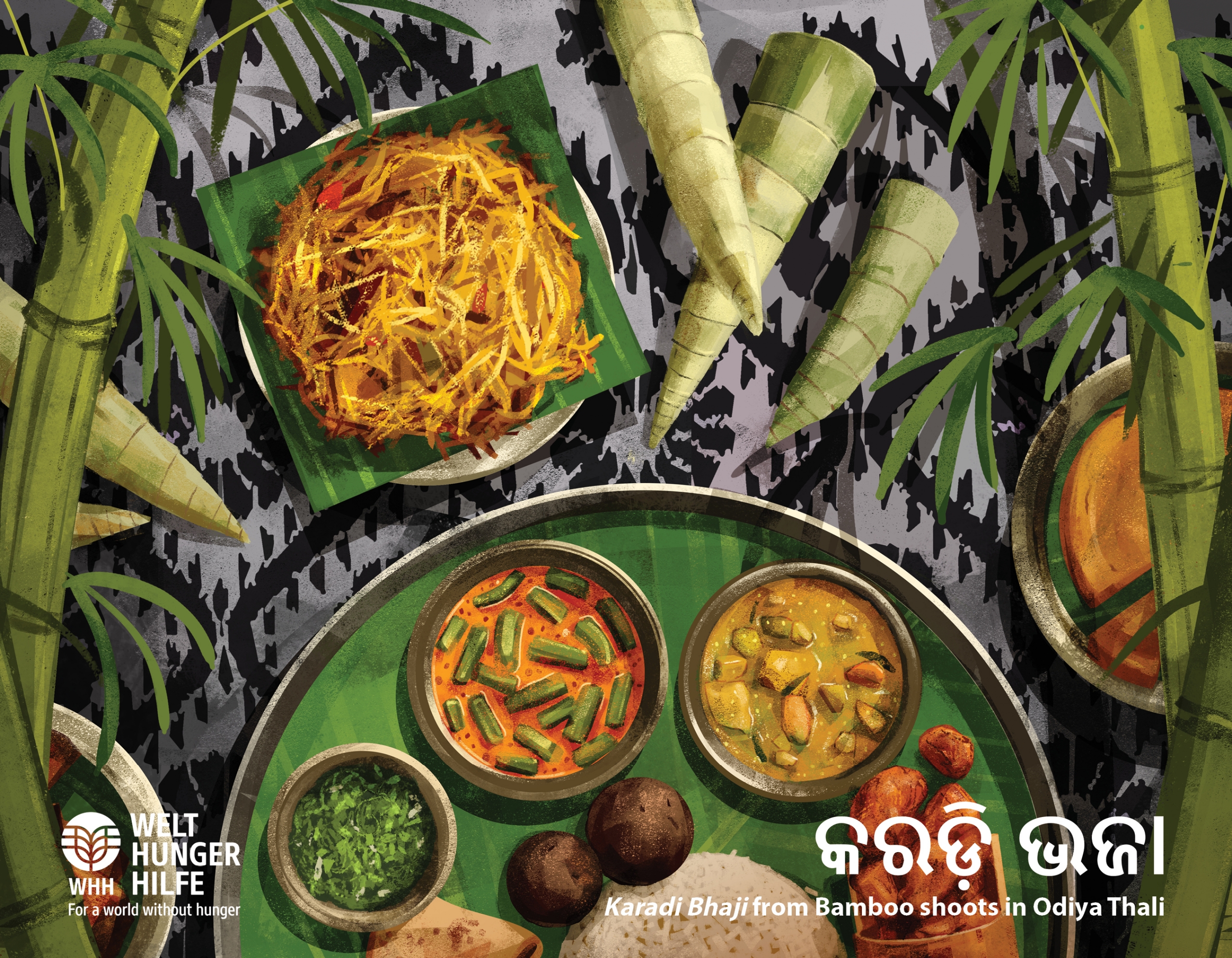
With its crispy texture and unique flavor from the tribal thali of Odisha, Karadi Bhaji or Bamboo Shoot Stir Fry is a great addition to the thali. It is prepared from bamboo shoots cut into thin strips, stir fried with button mushrooms, chopped onions, some bell pepper and seasoned with salt and black pepper. With high levels of fibre and very few calories per serving, bamboo shoots are a great way to lower your levels of bad LDL cholesterol. From digestive disorders to pregnancy-related nausea, there are numerous reasons to add this to the thali.
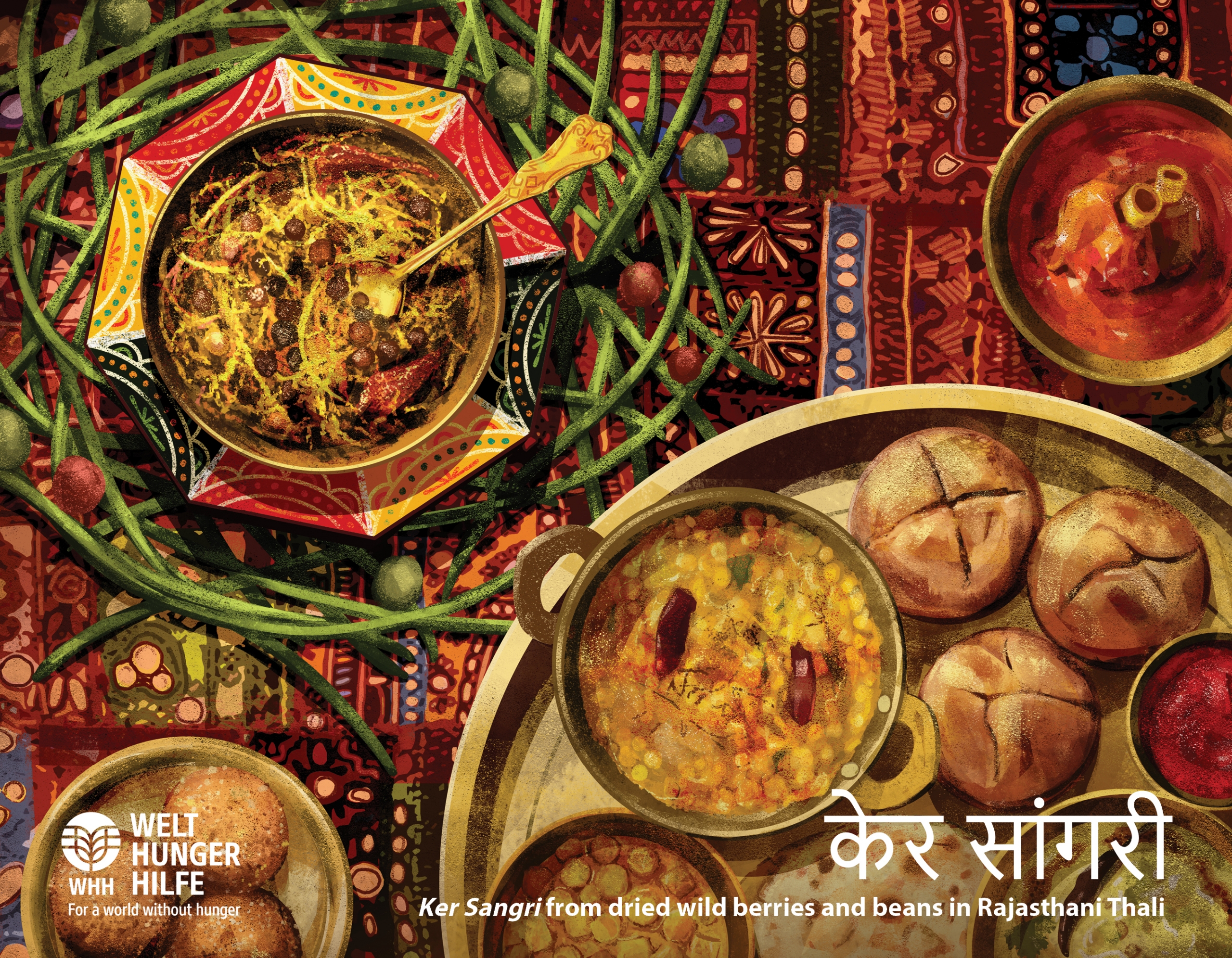
Ker Sangri, a Rajasthani delicacy from the Marwad region, features dried beans paired with desert berries. The dried beans, sourced from the Khejri tree (Sangri), and desert berries (Ker) are rehydrated through soaking, and then used to prepare a flavourful fry or curry. The combination of beans and berries offers several important micronutrients, including potassium, magnesium, folate, iron, and zinc, and are important sources of protein in vegetarian diets.
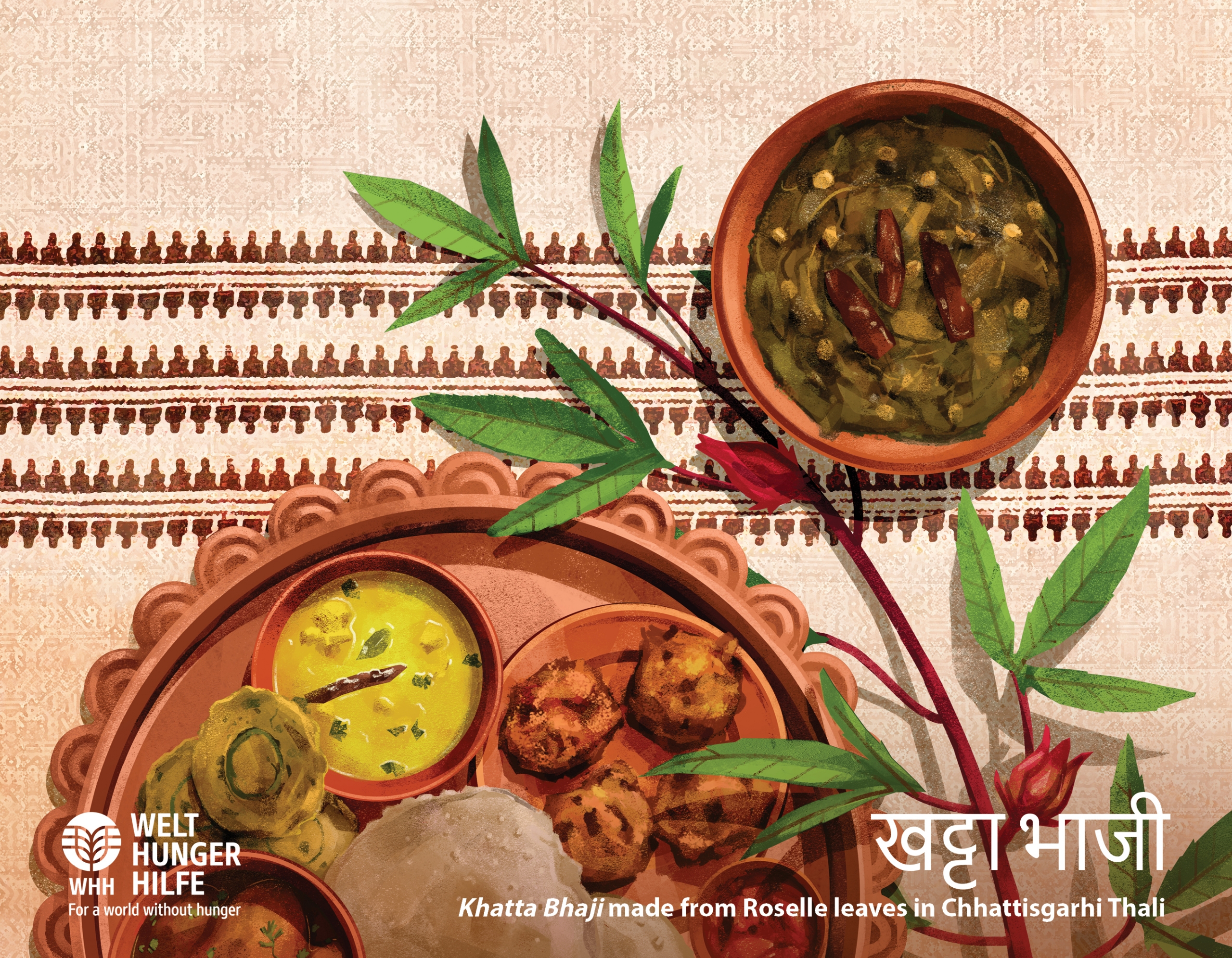
Khatta Bhaji, made from roselle leaves, is a simply prepared dish in Chhattisgarhi thali that involves boiling the leaves until it is soft, straining the water and pan frying with condiments like chopped onion, chillies, and spices. These leaves contain antioxidants, Vitamin A, Vitamin B1 (thiamine), Vitamin B2 (Riboflavin), Vitamin B9 (folic acid) and Vitamin C. The fruits of Roselle plant are also rich in essential minerals like calcium, potassium, magnesium, and iron.
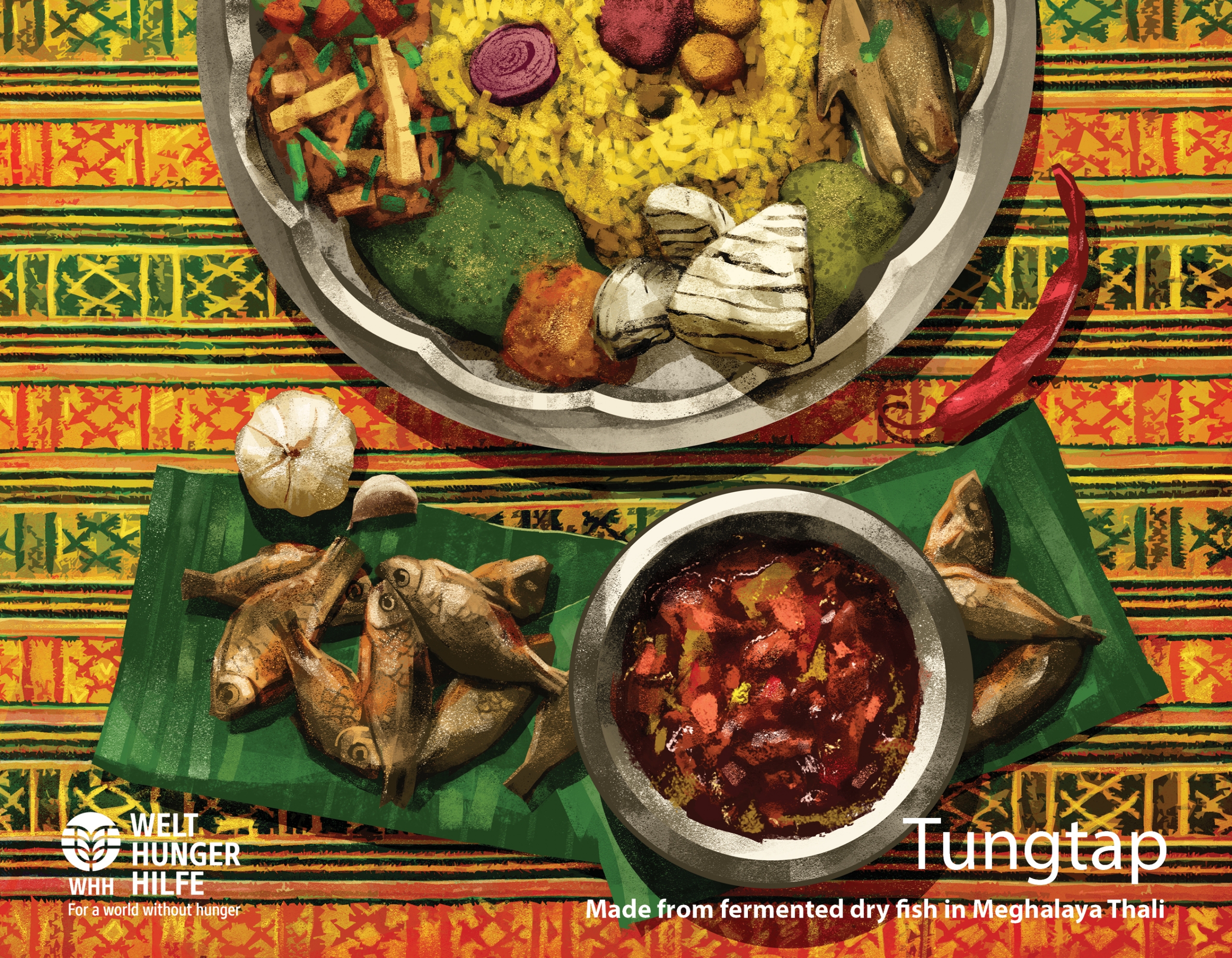
Tungtap is a dried fermented fish paste or chutney found in Meghalaya cuisine, consumed by the Khasi and Garo community. The sundried small fish, usually collected from rivers, are sun-dried, salted and sealed in earthen pots. During cooking, it is charred and mixed with onion, green chilies, and red chilies to make this fish chutney. Dry fish is a good source of vital nutrients especially during scarcity. It contains healthy fats, Omega 3, vitamin D and all other nutrients that are much needed to protect the heart.
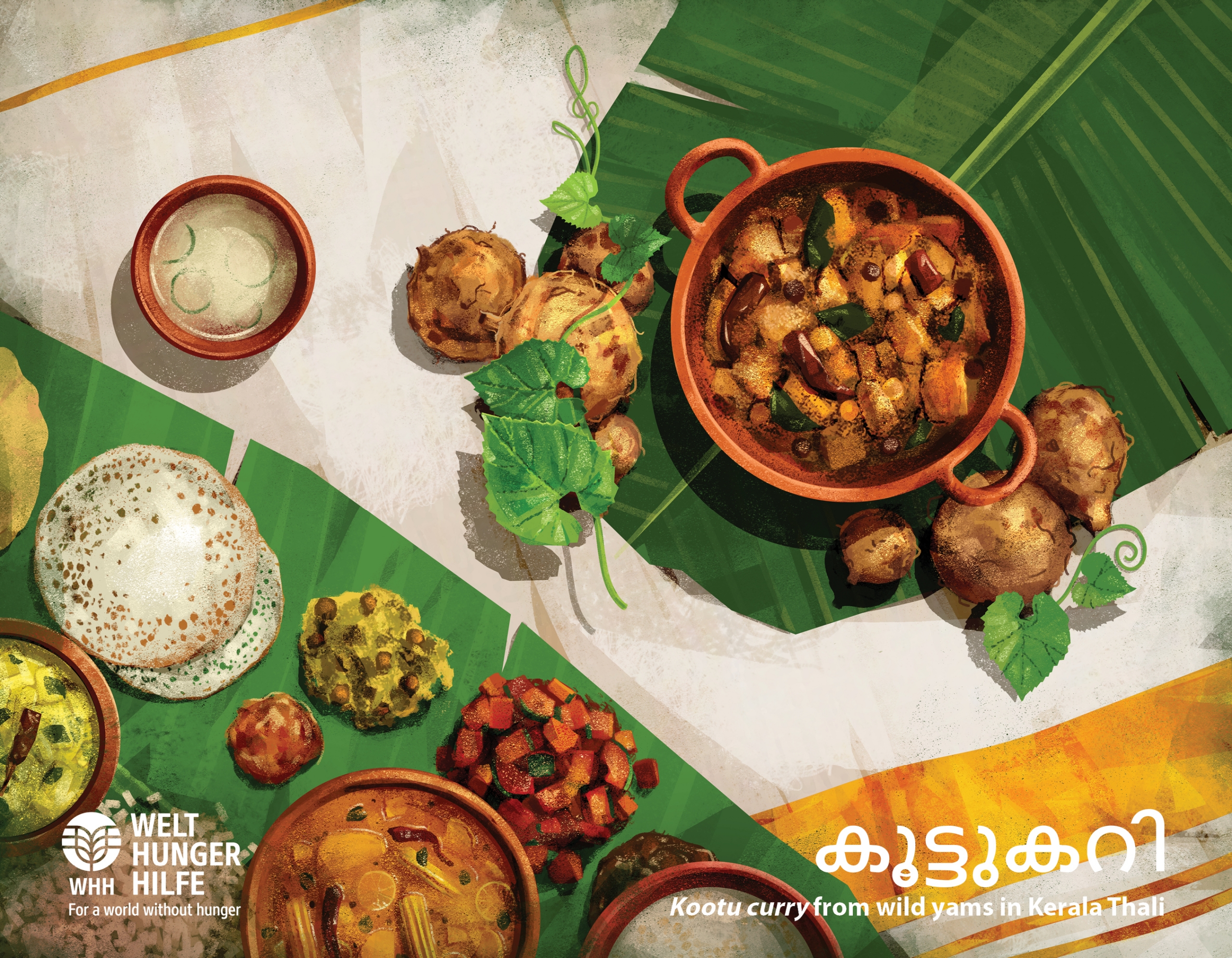
Kootu curry is part of the feast of Sadya during Onam festival in Kerala. It is a thick curry-based dish made with legumes such as black chickpeas and a few veggies like wild yam and plantains topped with mild spices and grated coconut. Kerala has a rich diversity of wild yams with unique properties. It has traditionally been used to treat arthritis, which causes pain, swelling, and stiffness in joints. Wild yams, often being uncultivated, are also a source of food during scarcity.
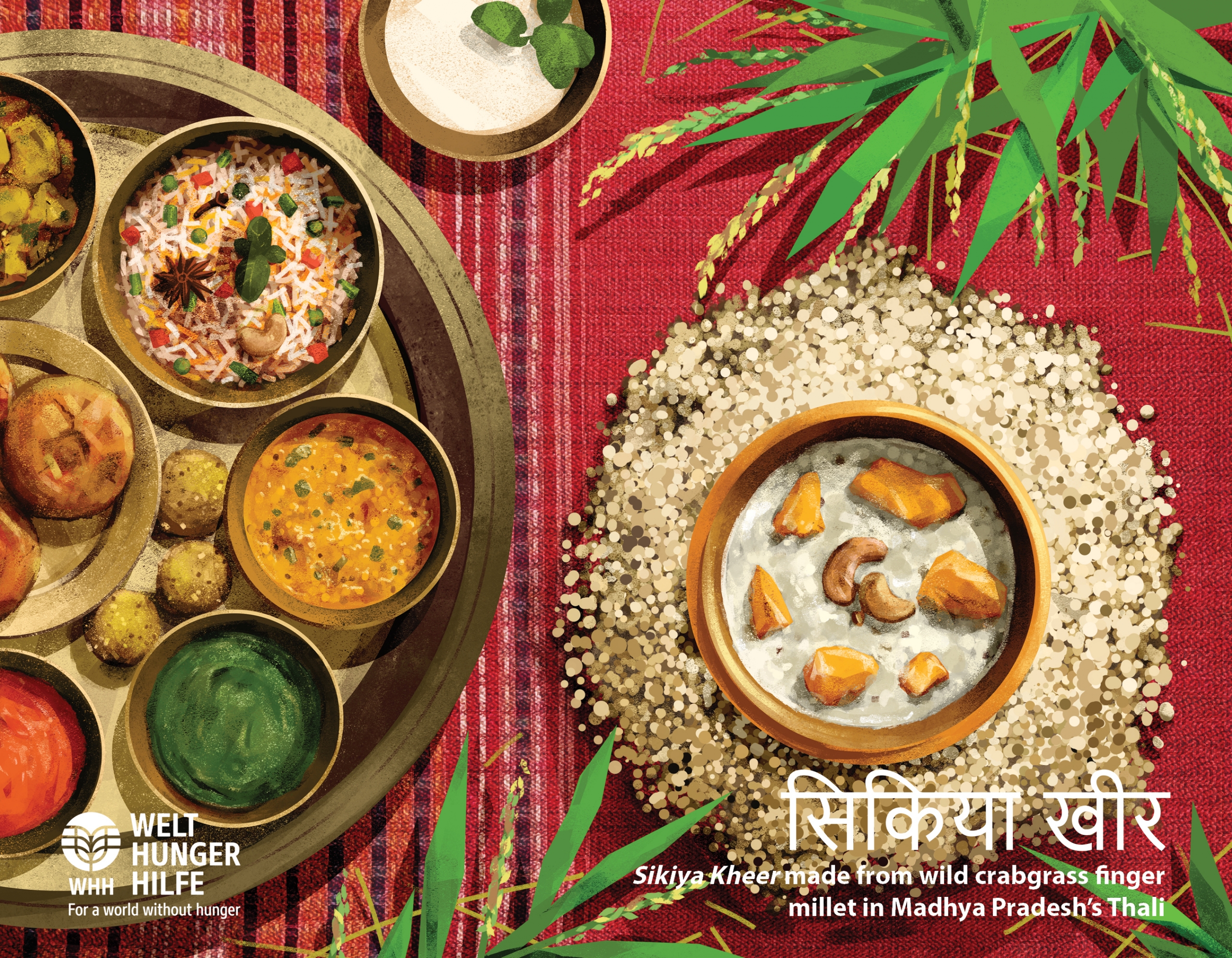
This is a dessert made by Baiga tribes of Madhya Pradesh, using wild crabgrass. The recipe is prepared with milk and mango pulp after which grounded sikiya seeds are added to the liquid mixture. The mixture is brought to boil until it becomes thick paste while adding sugar to taste. The dish is topped with almonds, raisins, and diced mango. The grains are even smaller than those of little millets and has a yellowish colour. They provide plenty of phosphorus and magnesium. All these are essential to boost metabolism, aid in weight loss, maintain good heart health, manage inflammation in the gut, and keep abnormal BP levels in check.
